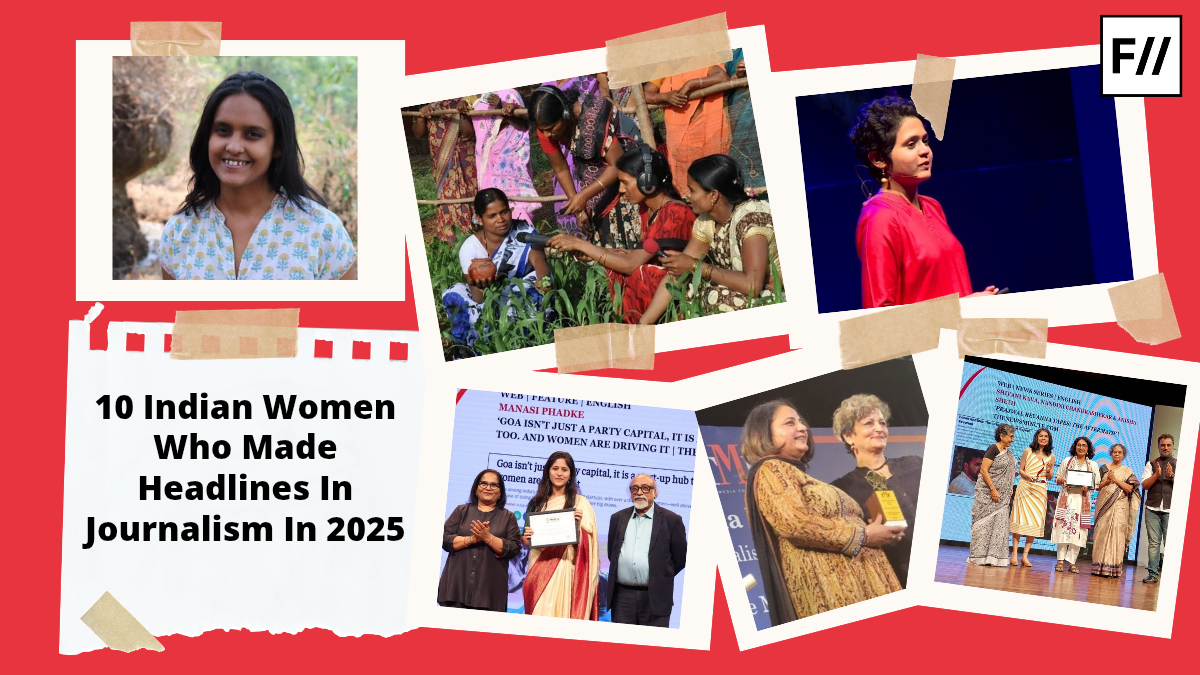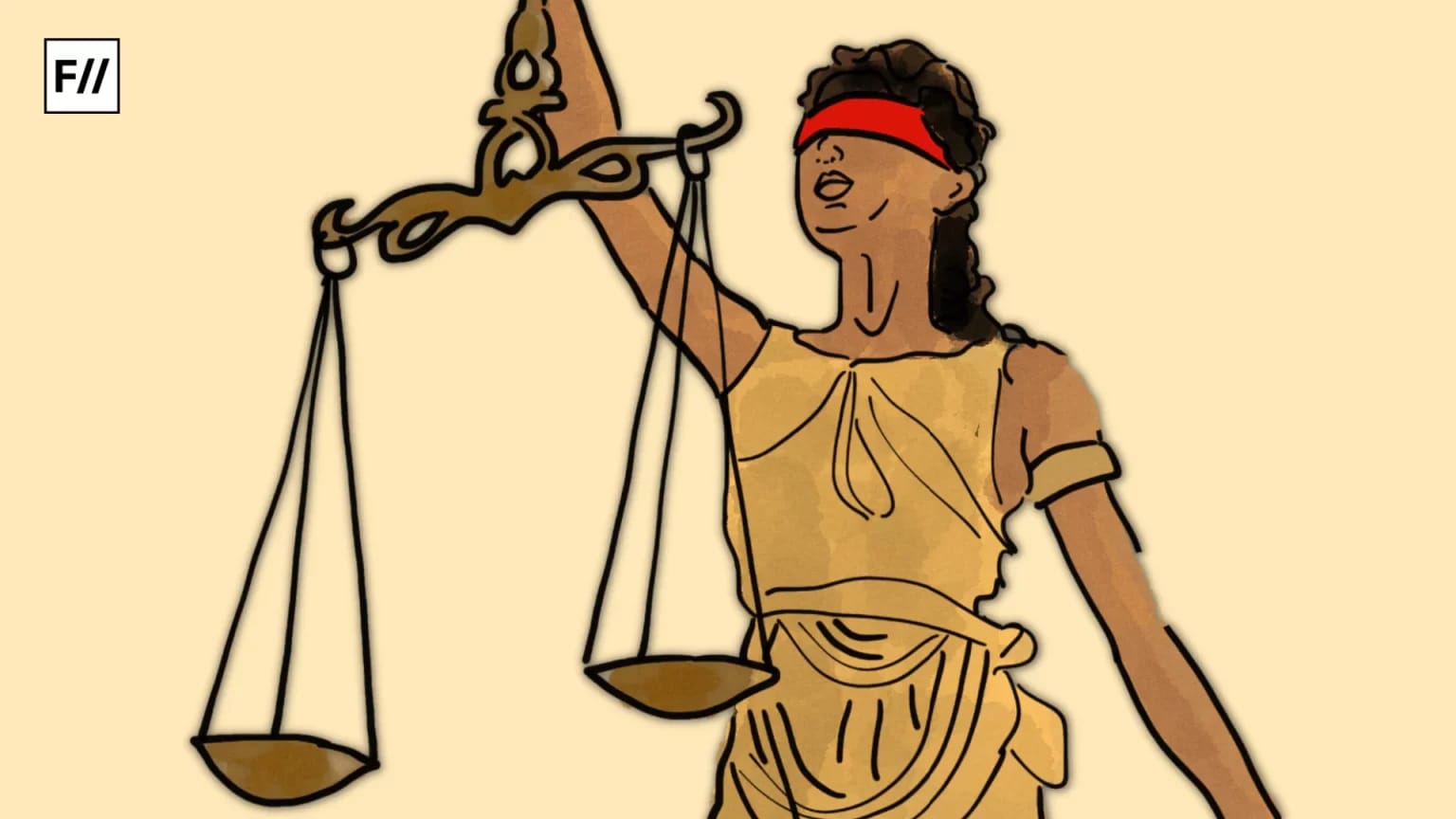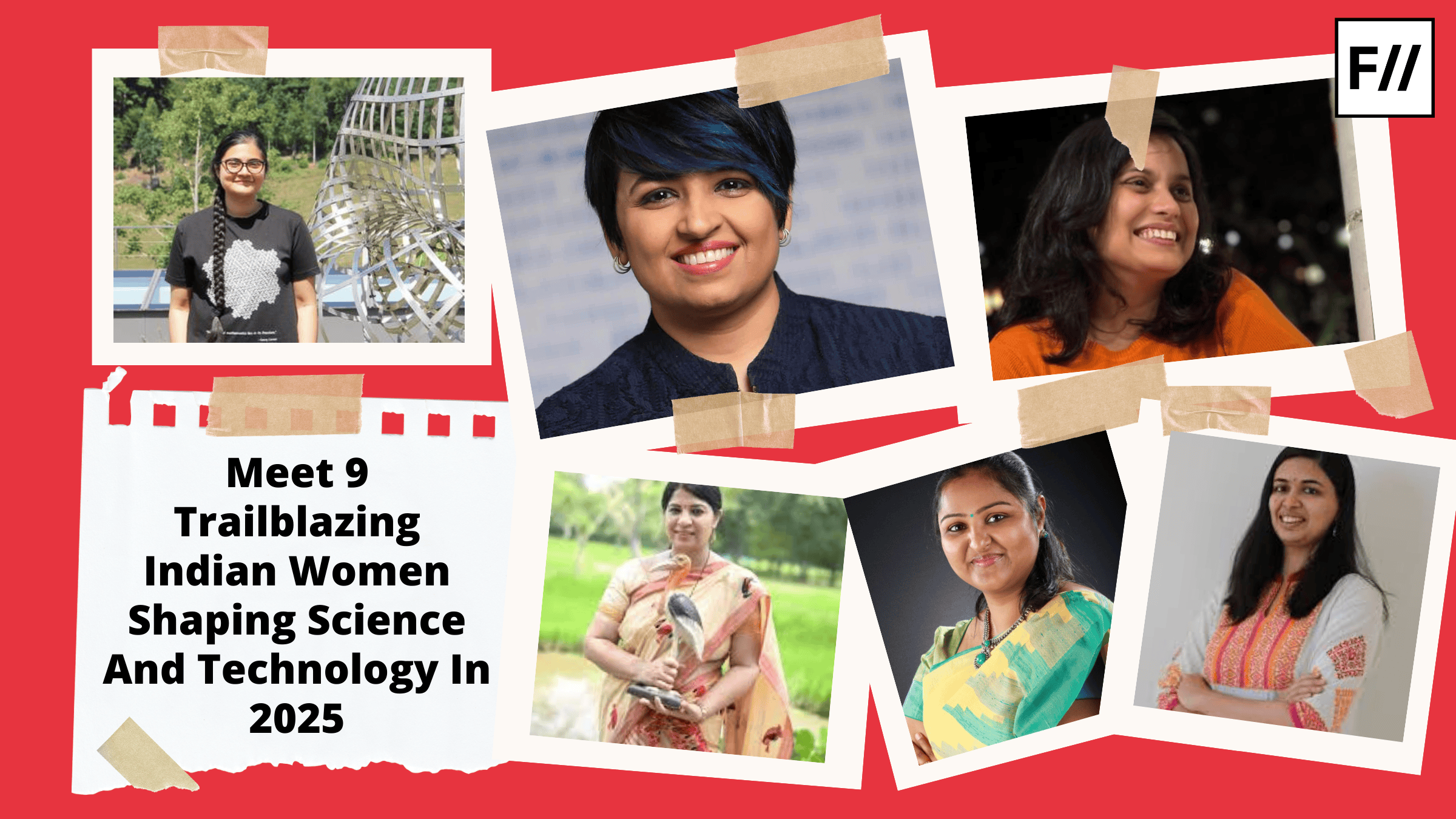Jane Goodall, the celebrated British primatologist, conservationist and activist, died of natural causes on October 1, 2025, while on a speaking tour in California. She was 91. For over six decades, Goodall had not only become an unconventional but formidable woman scientist in the predominantly male scientific community of the 1960s with her groundbreaking research on chimpanzees in the Gombe Stream National Park in Africa but also had earned the mantle of one of the most impactful public intellectuals championing the cause of conservation activism through her many non-profit educational enterprises, many of them involving young people. Goodall was a trailblazer in paving the path for women in science, particularly the involvement of women scientists in field research in natural sciences.
Born Valerie Jane Morris-Goodall in London in 1934 and raised primarily in the rural counties of Bournemouth, England, Jane Goodall’s childhood was spent in long, patient hours exploring the countryside and its wildlife habitats in what was to become later her lifetime practice. Her lifelong passion for Africa stemmed from a toy chimpanzee named Jubilee that her father had gifted her when she was a year old. Goodall’s extraordinary life is unforgettably chronicled in the documentary filmmaker Brett Morgen’s documentary film Jane, produced by National Geographic, which offers exquisite glimpses into the unconventional paths taken by a young woman determined to visit Africa ‘to live with animals.’ ‘Going to Africa, living with animals: that is all I ever thought about,‘ Goodall explains in the documentary.
Goodall’s life-changing journey
Goodall worked odd jobs to earn her passage to Kenya in 1957, where a serendipitous meeting with the anthropologist, archaeologist and palaeontologist Louis Leakey transformed her life forever. Initially, Leakey employed Goodall as his secretary. In 1960, after securing a research grant, Leakey was looking for someone with a “mind unbiased with scientific theory… a passion for knowledge, with a love for animals and with monumental patience” to work on his project to study chimpanzees in the wild. Leakey believed that studying chimpanzees would give greater insights into the behaviour of early humans, the great apes being our nearest kin in the evolutionary ladder. Before the Gombe expedition, there had been no studies of chimpanzees in the wild.
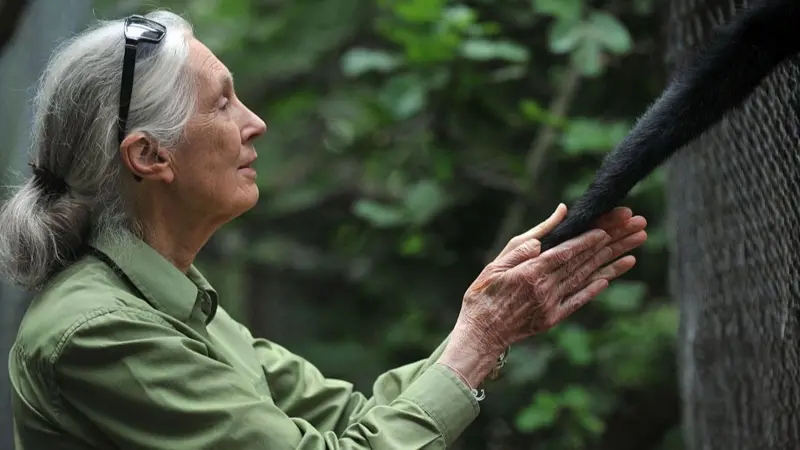
Goodall’s natural curiosity and infinite patience to spend hours in the wilderness with just a pair of binoculars to watch animals impressed Leakey. In 1960, Leakey sent Goodall as his research assistant to study chimpanzees in the wild at the Gombe Stream National Park in Tanzania. The priceless historical footage of Goodall at Gombe, shot by Goodall’s first husband, the preeminent wildlife photographer Hugo van Lawick, shown in Jane, chronicles the daily routine of a young 26-year-old Goodall in khaki shorts and a shirt with binoculars and a notebook in her hands crossing miles and miles of treacherous forest terrain on foot, in sun, in rain, perching on top of hills, crossing rivers and ravines, documenting wildlife, and silently, in good humour, patiently waiting for the chimpanzees to materialise before her watchful eyes. “My mission”, Goodall would later recall, “was to get close to the chimpanzees, to live among them, to be accepted.”
Goodall and the first family of chimpanzees
Goodall has written extensively about the challenges facing the researcher who sets out to study a wild animal in its native habitat. Animals fear humans, the apex predator, and run away from any human observing them even if they pose no danger to the animal. You must wait for the animal to trust you and approach you. In the fifth month of a six-month research grant, Goodall finally found acceptance amongst the chimpanzees when the chimps revealed themselves to Goodall and stayed in her presence, carrying on their activities without minding her or running away from her.
Goodall’s findings about the behaviour of chimpanzees in the wild shocked the 1960s scientific establishment when they were published. Goodall learnt that the chimpanzees used tools just like humans do: they used sticks to fish out termites from termite mounds and holes in the ground.
Goodall, “the white ape”, as she described herself, thus commenced an intimate association with the chimps that was to last over six decades. Goodall named the first family of chimpanzees that she studied: David Greybeard, an elder, gentle male; Flo, the powerful matriarch of the “F” family; Fifi, Flo’s daughter; Figan, Frodo, and Flint, three of Flo’s sons; and the other males Goliath, Mike, Stan, Humphrey, and Mr McGregor, and the female chimp Passion.
Findings shocked the scientific community
Goodall’s findings about the behaviour of chimpanzees in the wild shocked the 1960s scientific establishment when they were published. Goodall learnt that the chimpanzees used tools just like humans do: they used sticks to fish out termites from termite mounds and holes in the ground; they sharpened twigs into spears in “object modification” or the beginning of tool-making; they used leaves like sponges to soak up water from crevices; they used rocks to crack nuts; and they used gourds as toys to play with each other. Goodall’s work brought to the fore startling similarities between chimpanzees and humans: they craved touch and reassurance, reared their young with care, mourned their dead, lived in communities, and even attacked enemies. These groundbreaking observations suggested chimpanzees solve problems, exhibit imagination, and experience emotions—challenging the scientific community to think beyond the traditional framework.
These empirical findings, extensively documented through photographic images and research logs, created an uproar since they appeared to challenge the very definition of what it means to be human on an evolutionary scale. Human singularity and uniqueness appeared not so singular and unique after all. When Louis Leakey looked at Goodall’s findings, he simply stated, “We must now redefine man or accept chimpanzees as human.” Of course, Goodall’s initial findings have now become received wisdom in primatology studies.
From research to activism
In 1977, Goodall founded the Jane Goodall Institute to broaden the scope of her work from scientific research to more active conservation and protection of chimpanzees in the wild and environmental stewardship. Goodall had become increasingly aware of the ongoing illegal trade, habitat destruction, and poaching that directly affected the natural habitat of chimpanzees. The Jane Goodall Institute established community-centred conservation education programmes that involved local communities acting as stewards of their environment, which was critical to ensure the long-term welfare of the animals in the wild. The institute has since become a primary research facility for continued studies in chimpanzee and other primate behaviour, conservation efforts, and community development schemes across Africa.
“My mission”, Goodall would later recall, “was to get close to the chimpanzees, to live among them, to be accepted.”
In particular, the 1991 Roots and Shoots initiative of the Institute was Goodall’s solution to the problem of youth unrest and hopelessness that she witnessed first-hand in Tanzania and elsewhere in Africa. By encouraging young people to identify issues that matter to them, to pursue their passions, and then mentoring them in leadership skills, community and civic engagement, and service-learning projects, the Roots and Shoots project empowers young people to take charge of their lives and their environments in a positive direction.
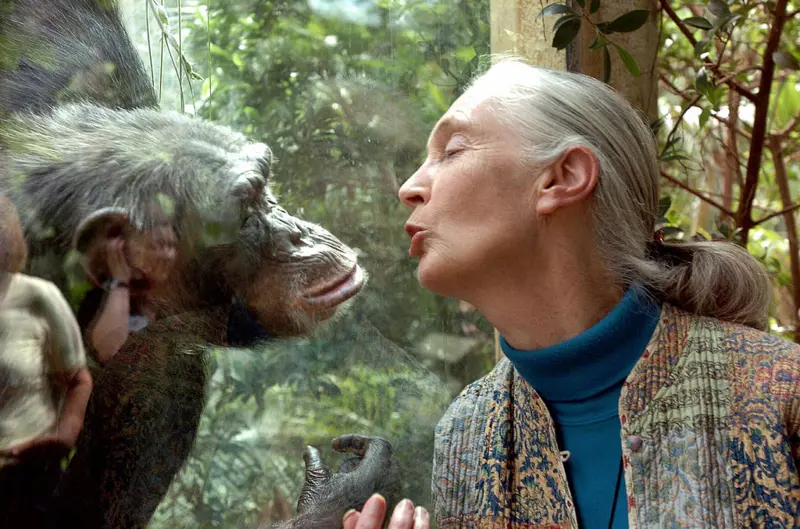
Roots and Shoots programs are active in 75+ countries with over a million youth volunteers and activists who work on service projects ranging from planting trees and cleaning the coastlines, keeping bees, planting sustainable urban vegetable gardens and many other activities of environmental stewardship. In India, the Jane Goodall Institute’s Roots and Shoots program oversees the Vanya Bharat initiative that brings together schools and students to rediscover, protect and celebrate India’s wilderness diversity.
Goodall’s Two Mothers
Goodall’s extraordinary life, above all, has served as a beacon for women in science, especially disciplines like primatology that rely entirely on fieldwork. Goodall studied chimpanzees without university credentials, though she went on to earn a doctorate in 1965 from Cambridge University in ethology, the science of animal behaviour, because of her pioneering data on chimpanzee behaviour. Her methods were at first regarded as unscientific and unconventional by the male establishment; for instance, giving names to the chimpanzee “subjects” instead of numbers and interacting with the animals instead of observing from a distance. Several noted ethologists, such as Dian Fossey, Birute Galdikas, Alison Behie, Cheryl Knott, Mireya Mayor et al., credit Goodall for inspiring them to pursue their passion to study the primates in the wild and to pursue the fearless freedom to claim a home in the wilderness with animals.
Goodall herself has credited her mother for supporting her passion to study animals. Goodall found that the wellsprings of maternal care had more similarities than differences between species, and her models for motherhood for her own son Hugo, affectionally called “Grub”, were her mother Vanne and Flo, the chimpanzee mother. Her legacy is a life rich with empathy for the natural world, love for animals, and the courage to go where no one has gone before to enrich our understanding of the planet we call home.

